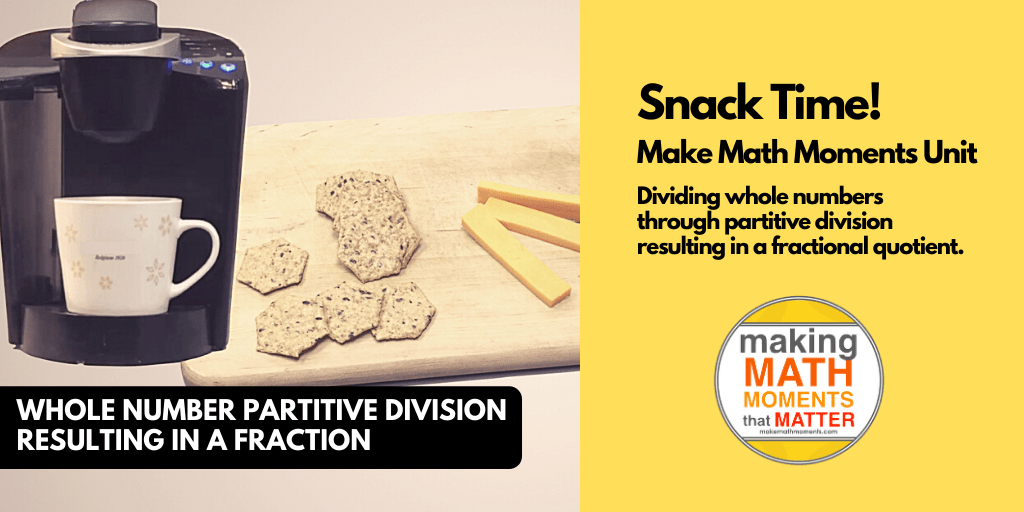Two Components You’re Missing For Consistent Math Teaching Strategy Adoption
Ever found yourself facing a room full of teachers, armed with a new curriculum, some shiny new resources, and a big mission, only to realize… this is gonna be harder than we thought?
That’s exactly what Jill, a math coordinator from here in Ontario and her team experienced as they rolled out a workshop to help teachers rethink their approach to teaching math.
There were successes—teachers were engaged, they saw sparks fly, they were engaged in great discussions, and you could even see that high school educators were rethinking their game plans.
But with success came new challenges, like keeping that momentum going and making those changes stick.
It turns out, giving educators the tools, ideas and motivation is only half the battle; helping them adapt and actually use them effectively is a whole different ball game.
And the secret that nobody told them was that for consistent implementation, follow up support makes up 90% of a successful adoption.
Most of us in education are juggling the balance between too many new things at once and not enough structure to make them all work.
Teachers want guidance, but they also want the freedom to adapt to their own classrooms. That’s the fine line we’re walking here.
That’s why you have to be committed to building a support system that isn’t just another list of tools but a roadmap to lasting change.
Here’s what we did to help this district:
We took a hard look at how they were using their time and their structuring support. We asked tough questions.
What did we find?
Two important changes needed to be implemented:
More Follow Up
This team knew that focusing on helping their teachers build their own mathematical proficiency was important.
Good for them! They were dedicating regular workshops during the year to support this.
They were under the assumption that sharing, demonstrating, and modeling effective strategies with teachers once in a workshop was enough.
We helped them restructure their workshop model to target less teachers per session and implement a consistent coaching cycle for those teachers. Then repeat.
Too Many Meetings
While they had a small team of coaches they were spending too much time meeting as a team each week.
The root cause of too many meetings is a lack of an aligned vision with clear, limited objectives. This team was spending too much time during the school year trying to decide what to work on, why it was important, and then how to get it done.
When a team has clear objectives with achievable measurable key results in place for the year and EVERYONE knows how they can impact those results then you don’t need to spend your valuable time trying to re-align and decide what’s important each week!
By helping this team shape and share their vision, objectives, and results we saved this time 12 hours x 3 coaches per week during the school year that can now be spent on the most important aspect of supporting consistent implementation in the classroom.
If you’re looking for consistent adoption and implementation of effective strategies ensure you have these 2 pieces in place:
1. An aligned vision with clear objectives and measurable key results.
2. Optimized structures and channels for support. It is absolutely essential to routinely audit the structure and channels you provide support to your educators.
Resources Related To The Video
- If you’d like to have the roadmap and playbooks to create, coordinate, and implement aligned school and district math action plans so that you can create long term sustainable student success in mathematics and proficiently & pedagogically strong educators then book a call with our team. We will share and help you implement our 4-stage process that guarantees growth!
- Visit Make Math Moments Problem Based Math Lessons page for other useful problem based units.
Want to Run Problem Based Lessons Without a Hitch In Your Classroom?
Focus Your Math Professional Development On What Matters
Free Training + Planning Workbook

LESSONS TO MAKE MATH MOMENTS
Each lesson consists of:
Each Make Math Moments Problem Based Lesson consists of a Teacher Guide to lead you step-by-step through the planning process to ensure your lesson runs without a hitch!
Each Teacher Guide consists of:
- Intentionality of the lesson;
- A step-by-step walk through of each phase of the lesson;
- Visuals, animations, and videos unpacking big ideas, strategies, and models we intend to emerge during the lesson;
- Sample student approaches to assist in anticipating what your students might do;
- Resources and downloads including Keynote, Powerpoint, Media Files, and Teacher Guide printable PDF; and,
- Much more!
Each Make Math Moments Problem Based Lesson begins with a story, visual, video, or other method to Spark Curiosity through context.
Students will often Notice and Wonder before making an estimate to draw them in and invest in the problem.
After student voice has been heard and acknowledged, we will set students off on a Productive Struggle via a prompt related to the Spark context.
These prompts are given each lesson with the following conditions:
- No calculators are to be used; and,
- Students are to focus on how they can convince their math community that their solution is valid.
Students are left to engage in a productive struggle as the facilitator circulates to observe and engage in conversation as a means of assessing formatively.
The facilitator is instructed through the Teacher Guide on what specific strategies and models could be used to make connections and consolidate the learning from the lesson.
Often times, animations and walk through videos are provided in the Teacher Guide to assist with planning and delivering the consolidation.
A review image, video, or animation is provided as a conclusion to the task from the lesson.
While this might feel like a natural ending to the context students have been exploring, it is just the beginning as we look to leverage this context via extensions and additional lessons to dig deeper.
At the end of each lesson, consolidation prompts and/or extensions are crafted for students to purposefully practice and demonstrate their current understanding.
Facilitators are encouraged to collect these consolidation prompts as a means to engage in the assessment process and inform next moves for instruction.
In multi-day units of study, Math Talks are crafted to help build on the thinking from the previous day and build towards the next step in the developmental progression of the concept(s) we are exploring.
Each Math Talk is constructed as a string of related problems that build with intentionality to emerge specific big ideas, strategies, and mathematical models.
Make Math Moments Problem Based Lessons and Day 1 Teacher Guides are openly available for you to leverage and use with your students without becoming a Make Math Moments Academy Member.
Use our OPEN ACCESS multi-day problem based units!
Make Math Moments Problem Based Lessons and Day 1 Teacher Guides are openly available for you to leverage and use with your students without becoming a Make Math Moments Academy Member.
Partitive Division Resulting in a Fraction
Equivalence and Algebraic Substitution
Represent Categorical Data & Explore Mean
Downloadable resources including blackline masters, handouts, printable Tips Sheets, slide shows, and media files do require a Make Math Moments Academy Membership.
Use our OPEN ACCESS multi-day problem based units!





What i do not realize is in fact how you are no longer actually much more wellfavored than you might be right now Youre very intelligent You recognize thus considerably in relation to this topic made me in my view believe it from numerous numerous angles Its like men and women are not fascinated until it is one thing to do with Lady gaga Your own stuffs excellent All the time handle it up